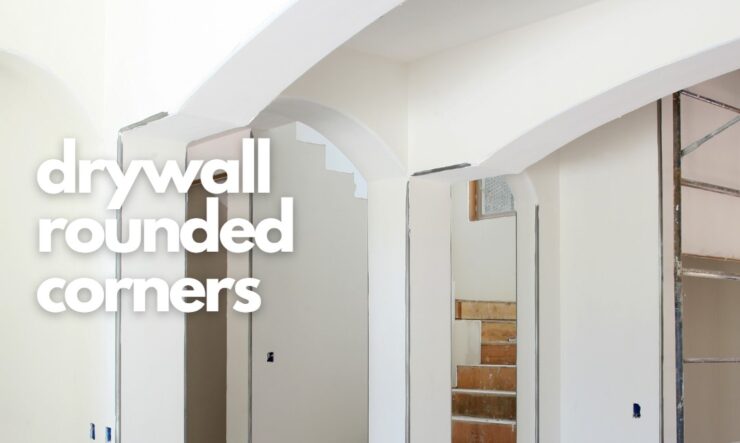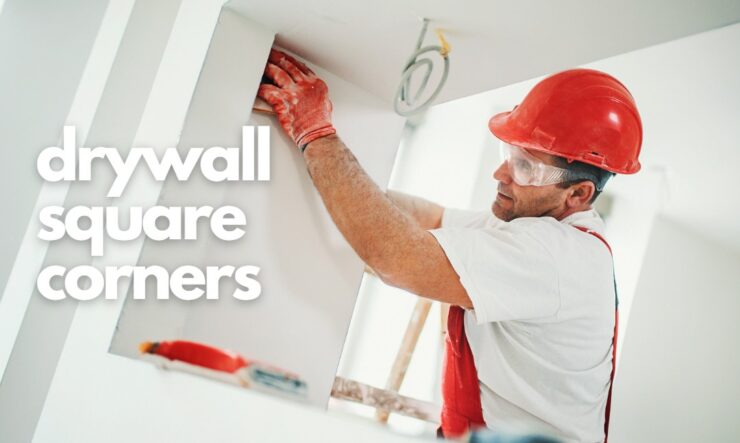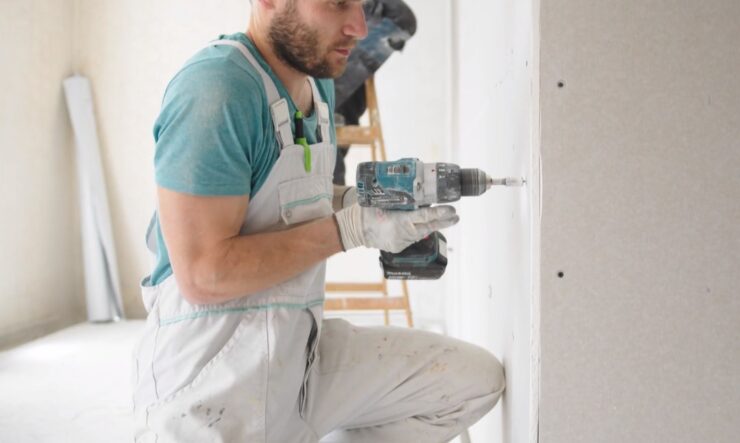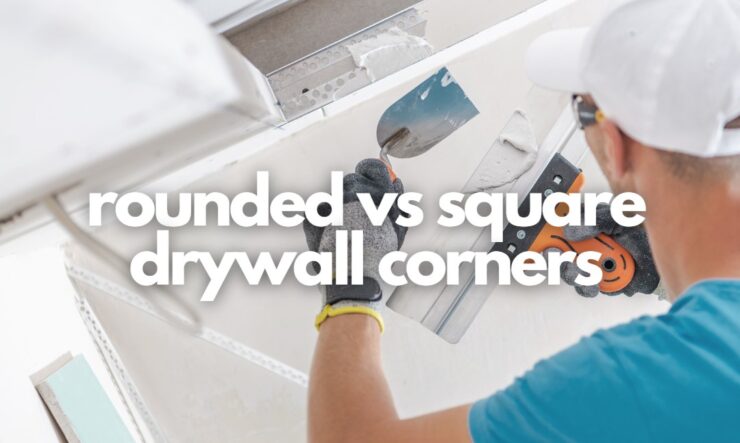Drywall corners are used to create frames around doors, windows, and other components of a building to provide stability and support for walls. While there are subtle differences in the design and installation of quadrants compared with straight edges, two factions of drywall architects often grapple over which corner type offers the best aesthetic or practicality—rounded or square corners.
To help homeowners decide which corner to use in their remodeling project, here we’ll take a look at some of the pros and cons of each type of corner piece. We’ll explore the visual cues, strength levels, costs, installation techniques as well as any other considerations that should be taken into account when choosing either rounded or square drywall corners.
Rounded Corners

They have been gaining popularity among home builders and designers, as they create a softer, more contemporary look to a space. These types require a bit more skill and time to install than their sharper, square counterparts, but they make a statement that is worth it in the end.
Advantages
Both of them offer distinct advantages in certain settings. It can be difficult to decide which type of corner to use during the taping and finishing of a project, so here are some need-to-know details about each style.
Rounded drywall corners: They provide greater versatility than other options because they can accommodate more curves. They are perfect for curved walls and also for beveling replastering with minimal sanding. In addition, the rounded edges require shorter lengths of tape and less joint compound because it is distributed evenly on both sides of the corner angle.
Square Drywall Corners: Square drywall gives an overall neat look, especially in larger spaces like dining rooms or kitchens. It eliminates gaps that rounding often leaves behind, providing a cleaner finished product without requiring additional cleanup or touchup after drying. Furthermore, taping square perforations requires less skill since it’s not dependent on the radius of each corner like with rounder ones – meaning good results every time.
Disadvantages
When considering whether to use rounded or square drywall corners, it’s important to weigh the advantages and disadvantages of each type. They provide a softer, more upscale appearance than their angular counterparts, but they also present some potential drawbacks.
The primary disadvantage of using them is that they are more difficult to install than traditional square drywall corners. Installing the beads in straight lines is much simpler and faster than creating curves around a room’s perimeter; for this reason, many contractors opt for square drywall corners instead of rounding the room’s edges. Round drywall also requires an additional step in construction as opposed to other types of corners – typically a reinforcing strip needs to be installed before the corner bead can be applied.
In addition to being more labor-intensive, they can make taping and finish difficult due to their shape. Because rounded walls prevent the tape from sitting flush against them, taping edges may take significantly longer or require the development of novel techniques not used with other types of beads.
Furthermore, because there are no hard edges in rounded walls, sanding will also take longer since there is no visible difference between the wall and corner once the mud has been applied.
For these reasons, most homes opt for a standard square drywall design rather than taking on the extra work associated with rounded walls during construction.
Square Corners

They are the standard for drywall installations because they are easy to achieve and maintain. They have an angular look that makes them noticeable and adds to the overall aesthetic of the finished product.
They are durable, low-cost, and easy to maintain. They also hold up better over time than rounded ones.
Let’s take a look at the advantages and disadvantages of square corners.
Advantages
They have a number of advantages over rounded ones in construction applications. They provide a more contemporary, modern look and feel, while also being easy to install and clean. When it comes to drywall applications, square corners are easier to cut and fit, as well as being highly durable.
The advantages of square-corner drywall include:
- Clean lines and minimized dust build-up: Unlike rounded edges which can collect dirt in their crevices, square edges stop dust particles from entering into walls or ceilings. This makes them a great choice for areas where the occupants are more concerned about hygiene.
- Precise cutting and fitting: They are much easier to accurately cut down in size when fitting into a wall space than round-edged material. This makes cutting easier for professionals but it is also useful for DIYers who want to make accurate measurements when cutting their own sheets at home.
- Durability: They provide greater structural strength on large walls compared to round edges as they are not prone to chipping or cracking under pressure or heat. This ensures that they will last longer than their round counterparts before needing repairs or replacement.
Disadvantages
They have a few drawbacks. Firstly, they are tricky to install and get right. Installing them requires measuring and cutting the drywall at different angles to create the corner. When installing multiple corners in a room or rooms you have to ensure everything is cut correctly and at the right angles in order for the corners to line up correctly with each other. This can lead to significant wastage when making mistakes with the measurements.
Additionally, it is often difficult to achieve clean and sharp corners with flat drywall techniques as drywall mud, which is used for taping and finishing, can shrink as it dries compromising the look of finished corners. The extra trim pieces needed also adds additional cost compared to rounded ones whose installation does not require extra parts.
How to repair damaged drywall corners

If you have them in your home or building, you may eventually need to repair them if they become damaged. Fortunately, repairing them is a relatively simple process that can be done with a few basic tools and materials.
The first step in repairing a damaged drywall corner is to remove any loose or damaged material around the area. Use a utility knife or a drywall saw to carefully cut away any damaged drywall, being careful not to cut into any electrical wires or plumbing pipes behind the wall.
Next, use a piece of scrap drywall or corner bead as a template to create a new one that matches the existing profile. Trace the template onto a new piece of drywall or corner bead and cut it out with a saw or a pair of snips.
Before installing the new piece, apply the joint compound to the damaged area using a putty knife. Smooth the compound over the damaged area and let it dry completely.
Once the joint compound has dried, apply a thin layer of joint compound to the back of the new piece and press it into place, aligning it with the existing corner. Use drywall screws to secure the new piece in place, being careful not to overdrive the screws.
After the new corner piece is secured in place, apply a joint compound to the joint between the new and existing corners. Smooth the compound with a putty knife, feathering the edges outwards to create a smooth transition.
Allow the joint compound to dry completely, then sand the repaired area lightly with fine-grit sandpaper to create a smooth, even finish. Apply a second coat of joint compound if necessary, then sand and paint the repaired area to match the surrounding wall.
FAQs
Which corner option is better for a formal space like a dining room or office?
Square ones may be more suitable for formal spaces as they provide a cleaner, more traditional look.
Are there any disadvantages to using rounded corners?
They can be more expensive and may not be as durable as square ones.
Can I use a mix of rounded and square corners in the same space?
Yes, a mix of both can create an interesting design element.
Can I install rounded corners on the existing drywall?
Yes, but it may require additional work and labor to properly install.
Are there different sizes of rounded and square corners available?
Yes, they are available in different sizes to accommodate various wall thicknesses.
Can rounded corners be painted the same as square corners?
Yes, both types can be painted in the same way.
How do I choose between rounded and square corners?
Consider factors such as design aesthetic, room purpose, cost, type of drywall installation, and personal preference when making a decision.
Are there any maintenance requirements for rounded corners?
They may require more frequent touch-ups or repairs compared to square ones.
Can I change my mind after installing one type of corner and switching to the other?
Yes, but it may require additional work and labor to make the switch.
Conclusion
Ultimately, the choice boils down to preference. Rounded drywall corners offer a softer, more contemporary look and may work better in some design styles; however, they can also be more difficult and time-consuming to install. Square drywall corners are easier to install but may not look as finished and polished as the rounded variety in certain settings.
Regardless of which option you choose, make sure you measure your space accurately and use quality materials when installing either type of corner. If possible, consult with a professional who has experience working with both square and rounded drywall corners to get the right advice for your specific space. Your decision should ultimately be based on personal preference, allowing you to achieve the style you desire while also keeping installation time and cost in mind.
